Cables, prices and quality.
We all know what cables are and we see them all around us. They provide us with electricity to enjoy all the comforts that our modern age offers.
But what do you do if you need cables for your home or workplace and you don't know where to start?
We at ELMARK's online store are here to answer all your questions and help you choose the best and most suitable products for your needs.
Full information is set out below about the way cables are made, the various types of cable, their uses in the home and in industry and how to find the perfect cable-to-price ratio.
What are cables?
Basically, cables are a metallic electric conductor with the main purpose of carrying an electric current.
To ensure safety, cables are enclosed in an insulating material, usually rubber or PVC.
The word cable does not have the same meaning when translated from Bulgarian into another language, including English. The reason is that the word itself is foreign.
In the past, another non-Bulgarian word "cord" was used to describe cables.
What are cables used for?
Cables are widely used in almost any industry for a very simple reason: nowadays electricity is used almost everywhere.
Cables are mainly used for power supplies and they can be used practically anywhere: domestic, electrical, professional and industrial appliances and telecommunications.
Although wireless technology is increasingly entering our modern world, it is still not universal and cables are still the most widely used means of conducting electricity.
Different types of cables and their uses
Since they were first created, cables have developed enormously and today they come in all kinds, each with different, often mutually exclusive uses.
Standard wiring cables and conductors (also known as coaxial cables) are the most common, at least with regard to electrical conductivity. They are widely used and found almost everywhere where electrical systems are being built. This type of cable can justifiably be referred to as to the 'circulatory system' of an electrical installation.
Optical cables are non-metallic cables composed of one or more optical fibres. Each fibre is individually wrapped in plastic, which is a different colour for the different fibres. Optical cables are the modern equivalent of the old coaxial cables. Their advantages include the fact that more data can be transmitted faster and over longer distances.
Power cables are the term for cables used to transmit electrical power in distribution networks. The advantage of this type of cable is that they can carry high voltage in addition to low and medium voltage. This makes them particularly useful for plant installations and power supplies, factories and heavy industry.
To help you find your way around the world of cables, here are a few more types that may be useful information for most people:
- Heating cables - used to control and change the temperature in various appliances (e.g. coffee machines), flooring, gutters, pipes, plants, rooms and outdoor equipment;
- Audio-video (AV) cables – mainly used for connecting audio and video equipment. The quality of the conductor that transmits the sound and image is very important;
- Power supply cables – used to power domestic or industrial electrical appliances, machinery and mobile electrical equipment. They have the advantage of flexibility and the fact that they have multiple wires. Each wire is individually insulated with coloured PVC;
- High voltage cables - resistant to high temperatures, high voltages (more than 30 kV) and lubricating oils;
- Strip cables – carry data signals. These are used in electronic equipment and AV devices. They can be multicoloured or monochrome and have a variable number of conductors of different rasters;
- Control and command cables – flexible, multiple-wire cables carrying a data signal.
How to recognise quality and get the best cable-to-price ratio
There is now an enormous choice of cables due to a number of factors, driven mainly by market mechanisms such as competition and cheaper production.
It is not easy to navigate this ocean of choice for cables and focus on the best cable-to-price ratio.
So we at Elmark undertake to get you a little more involved in the world of cables and share some important things about cables that we think you might find it useful when choosing them.
To begin with, we advise you to trust only proven manufacturers in the industry, avoiding sources with dubious names and unproven origins.
To recognise a quality product, you need to pay attention to the materials it is made of. For example, with AV cables you cannot get quality sound or images if they are not made with pure copper wire, because this metal has the best conductivity for sound and images. Different impurities in cheaper alternative audio-video cables contribute to an unsatisfactory end result for many consumers.
This can also apply to almost all other types of cables, which is why we advise you not to skimp on the end price at the expense of quality.
Good materials have their value and cables made of quality raw materials cannot be cheap.
Cable prices are set out in our category
At ELMARK's online store, we try to put the things we are referring to into practice. With us you will find a wide range of cables that stand out both with the high-quality materials they are made of and the amazing cable-to-price ratio that we offer.
Depending on your needs, you can get excellent wiring cables and conductors to ensure good, stable conductivity in your electrical system.
Do not compromise with quality and trust our extensive experience at ELMARK with the production of all types of cables.
-
To the product
 CONDUCTOR H05V-U 1X0.5mm² 0.45/0.75kV WHITE 822001W
CONDUCTOR H05V-U 1X0.5mm² 0.45/0.75kV WHITE 822001W-
Brand

Colour White Number of cores 1 Section 0.5 mm² *Note Price per meter -
Brand
-
To the product
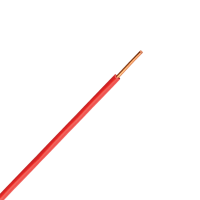 CONDUCTOR H05V-U 1X0.75mm² 0.45/0.75kV WHITE 822002W
CONDUCTOR H05V-U 1X0.75mm² 0.45/0.75kV WHITE 822002W-
Brand

Colour White Number of cores 1 Section 0.75 mm² *Note Price per meter -
Brand
-
To the product
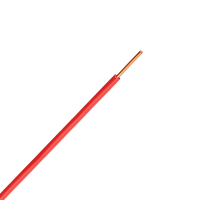 CONDUCTOR H05V-U 1X1mm² 0.45/0.75kV WHITE 822003W
CONDUCTOR H05V-U 1X1mm² 0.45/0.75kV WHITE 822003W-
Brand

Colour White Number of cores 1 Section 1 mm² *Note Price per meter -
Brand
-
To the product
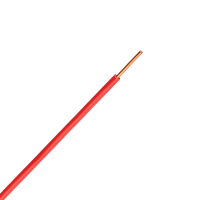 CONDUCTOR H07V-U 1X1.5mm² 0.45/0.75kV WHITE 822004W
CONDUCTOR H07V-U 1X1.5mm² 0.45/0.75kV WHITE 822004W-
Brand

Colour White Number of cores 1 Section 1.5 mm² *Note Price per meter -
Brand
-
To the product
 CONDUCTOR H07V-U 1X4mm² 0.45/0.75kV WHITE 822006W
CONDUCTOR H07V-U 1X4mm² 0.45/0.75kV WHITE 822006W-
Brand

Colour White Number of cores 1 Section 4 mm² *Note Price per meter -
Brand
-
To the product
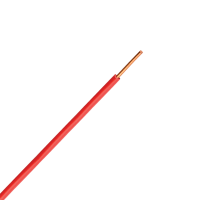 CONDUCTOR H07V-U 1X6mm² 0.45/0.75kV WHITE 822007W
CONDUCTOR H07V-U 1X6mm² 0.45/0.75kV WHITE 822007W-
Brand

Colour White Number of cores 1 Section 6 mm² *Note Price per meter -
Brand
-
To the product
 CONDUCTOR H07V-U 1X10mm² 0.45/0.75kV WHITE 822008W
CONDUCTOR H07V-U 1X10mm² 0.45/0.75kV WHITE 822008W-
Brand

Colour White Number of cores 1 Section 10 mm² *Note Price per meter -
Brand
-
To the product
 CONDUCTOR H05V-U 1X0.5mm² 0.45/0.75kV BLUE 822001BL
CONDUCTOR H05V-U 1X0.5mm² 0.45/0.75kV BLUE 822001BL-
Brand

Colour Blue Number of cores 1 Section 0.5 mm² *Note Price per meter -
Brand
-
To the product
 CONDUCTOR H05V-U 1X0.5mm² 0.45/0.75kV RED 822001R
CONDUCTOR H05V-U 1X0.5mm² 0.45/0.75kV RED 822001R-
Brand

Colour Red Number of cores 1 Section 0.5 mm² *Note Price per meter -
Brand
-
To the product
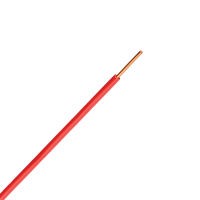 CONDUCTOR H05V-U 1X0.5mm² 0.45/0.75kV BLACK 822001B
CONDUCTOR H05V-U 1X0.5mm² 0.45/0.75kV BLACK 822001B-
Brand

Colour Black Number of cores 1 Section 0.5 mm² *Note Price per meter -
Brand
-
To the product
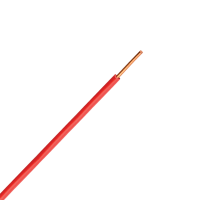 CONDUCTOR H05V-U 1X0.5mm² 0.45/0.75kV YELLOW-GREEN 822001YG
CONDUCTOR H05V-U 1X0.5mm² 0.45/0.75kV YELLOW-GREEN 822001YG-
Brand

Colour Yellow/Green Number of cores 1 Section 0.5 mm² *Note Price per meter -
Brand
-
To the product
 CONDUCTOR H05V-U 1X0.5mm² 0.45/0.75kV BROWN 822001BR
CONDUCTOR H05V-U 1X0.5mm² 0.45/0.75kV BROWN 822001BR-
Brand

Colour Brown Number of cores 1 Section 0.5 mm² *Note Price per meter -
Brand
-
To the product
 CONDUCTOR H05V-U 1X0.75mm² 0.45/0.75kV BLUE 822002BL
CONDUCTOR H05V-U 1X0.75mm² 0.45/0.75kV BLUE 822002BL-
Brand

Colour Blue Number of cores 1 Section 0.75 mm² *Note Price per meter -
Brand
-
To the product
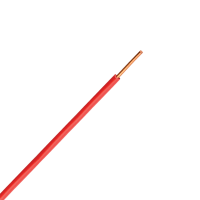 CONDUCTOR H05V-U 1X0.75mm² 0.45/0.75kV RED 822002R
CONDUCTOR H05V-U 1X0.75mm² 0.45/0.75kV RED 822002R-
Brand

Colour Red Number of cores 1 Section 0.75 mm² *Note Price per meter -
Brand
-
To the product
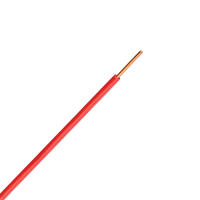 CONDUCTOR H05V-U 1X0.75mm² 0.45/0.75kV BLACK 822002B
CONDUCTOR H05V-U 1X0.75mm² 0.45/0.75kV BLACK 822002B-
Brand

Colour Black Number of cores 1 Section 0.75 mm² *Note Price per meter -
Brand
-
To the product
 CONDUCTOR H05V-U 1X0.75mm² 0.45/0.75kV YELLOW-GREEN 822002YG
CONDUCTOR H05V-U 1X0.75mm² 0.45/0.75kV YELLOW-GREEN 822002YG-
Brand

Colour Yellow/Green Number of cores 1 Section 0.75 mm² *Note Price per meter -
Brand
-
To the product
 CONDUCTOR H05V-U 1X0.75mm² 0.45/0.75kV BROWN 822002BR
CONDUCTOR H05V-U 1X0.75mm² 0.45/0.75kV BROWN 822002BR-
Brand

Colour Brown Number of cores 1 Section 0.75 mm² *Note Price per meter -
Brand
-
To the product
 CONDUCTOR H05V-U 1X1mm² 0.45/0.75kV BLUE 822003BL
CONDUCTOR H05V-U 1X1mm² 0.45/0.75kV BLUE 822003BL-
Brand

Colour Blue Number of cores 1 Section 1 mm² *Note Price per meter -
Brand
-
To the product
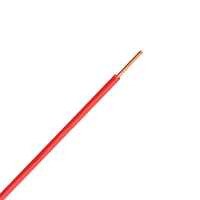 CONDUCTOR H05V-U 1X1mm² 0.45/0.75kV RED 822003R
CONDUCTOR H05V-U 1X1mm² 0.45/0.75kV RED 822003R-
Brand

Colour Red Number of cores 1 Section 1 mm² *Note Price per meter -
Brand
-
To the product
 CONDUCTOR H05V-U 1X1mm² 0.45/0.75kV BLACK 822003B
CONDUCTOR H05V-U 1X1mm² 0.45/0.75kV BLACK 822003B-
Brand

Colour Black Number of cores 1 Section 1 mm² *Note Price per meter -
Brand
Prices are VAT inclusive





